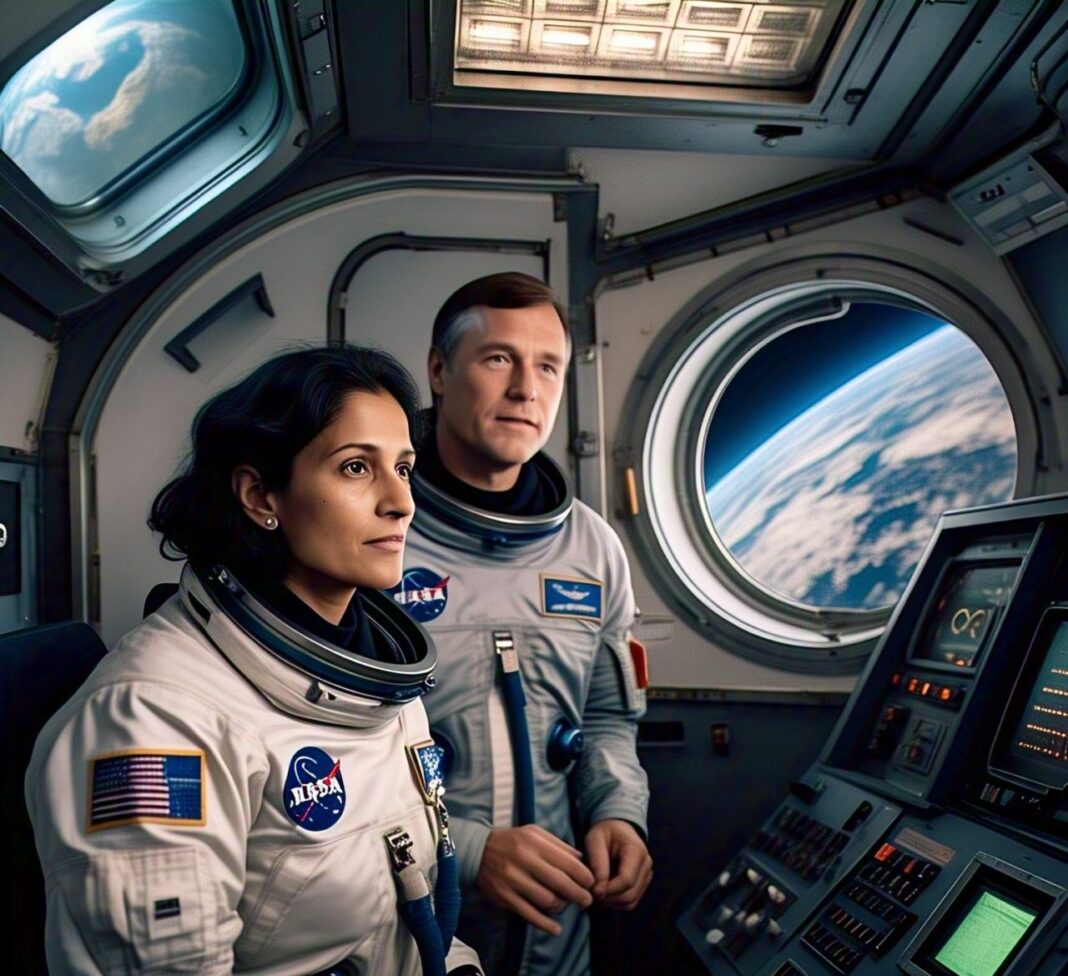Home at Last: NASA Astronauts Return to Earth After Unforeseen Nine-Month Space Mission
Following an unexpected nine-month stay in space, NASA astronauts Butch Wilmore and Sunita Williams have finally returned to Earth, marking the conclusion of a mission that garnered widespread global attention and transformed into a contentious political issue. On Tuesday, the SpaceX Crew Dragon spaceship, named Freedom, successfully transported Wilmore, Williams, fellow American Nick Hague, and Russian cosmonaut Aleksandr Gorbunov through the Earth’s atmosphere. The spacecraft then deployed parachutes, ensuring a gentle splashdown in the ocean off the coast of Florida at 5:57 pm (2157 GMT).
As the gumdrop-shaped spacecraft, charred from withstanding scorching temperatures of 3,500 degrees Fahrenheit (2,000 degrees Celsius) during re-entry, steadily bobbed on the waves beneath a clear, sunny sky, ground teams erupted in cheers. “What a ride — I see a capsule full of grins,” exclaimed Hague.
As fast boats rapidly approached the capsule for initial safety checks, an unexpected escort arrived in the form of a playful pod of dolphins. Soon after, a larger recovery vessel hoisted Freedom aboard. Teams then opened the hatch, and one by one, the astronauts emerged, waving and flashing thumbs-up signs as they were helped onto mobility aids.Next, they will be flown by helicopter to Houston, where they will reunite with their families within the next day or two and embark on a physical rehabilitation program. The White House took to X to post, “PROMISE MADE, PROMISE KEPT,” reiterating a contentious claim that President Donald Trump’s administration had accelerated the recovery timeline.
The quartet departed the International Space Station early Sunday, commencing their 17-hour journey home after exchanging final farewells and hugs with the remaining crew. Wilmore and Williams, both ex-Navy pilots and veterans of two prior space missions, initially flew to the orbital lab in June last year. Their trip was intended to be a short roundtrip to test Boeing’s Starliner on its first crewed flight.
However, propulsion issues rendered the spacecraft unfit for their return, forcing it to return empty. Consequently, they were reassigned to NASA’s SpaceX Crew-9 mission, which arrived at the ISS last September with a reduced crew of two — rather than the usual four — to accommodate the pair. They had become widely referred to as the “stranded” astronauts.
With Crew-10 docking on Sunday, Crew-9 was finally cleared to depart. Wilmore and Williams’ 286-day stay exceeds the typical six-month ISS rotation, ranking sixth among US records. Frank Rubio holds the longest single-mission US stay at 371 days, while Russian cosmonaut Valeri Polyakov retains the world record at 437 days.Despite the challenges associated with prolonged spaceflight — including muscle and bone loss, vision issues, and balance readjustment — experts assert that their nine-month stay is manageable in terms of health risks. However, the unexpected nature of their extended mission, initially without sufficient supplies, sparked widespread public sympathy.
“If you found out you went to work today and were going to be stuck in your office for the next nine months, you might have a panic attack,” Joseph Keebler, a psychologist at Embry-Riddle Aeronautical University, told AFP. “These individuals have shown unbelievable resilience.” The mission also became a contentious political issue, with President Trump and his close advisor, Elon Musk — who leads SpaceX — repeatedly suggesting that former President Joe Biden abandoned the astronauts and refused an earlier rescue plan. Such accusations have prompted an outcry within the space community, particularly as Musk offered no specifics, and NASA’s fundamental plan for the astronauts’ return has remained unchanged since their Crew-9 reassignment.
Steve Stich, NASA’s Commercial Crew Program manager, confirmed during a post-mission press conference that there had been no discussions about deploying a relief crew sooner and that the most recent scheduling delays were due to SpaceX’s own scheduling adjustments. President Trump has also drawn attention for his unusual remarks, referring to Williams — who holds the US record for the second-longest cumulative time in space — as “the woman with the wild hair” and speculating about the personal dynamic between the two astronauts.







